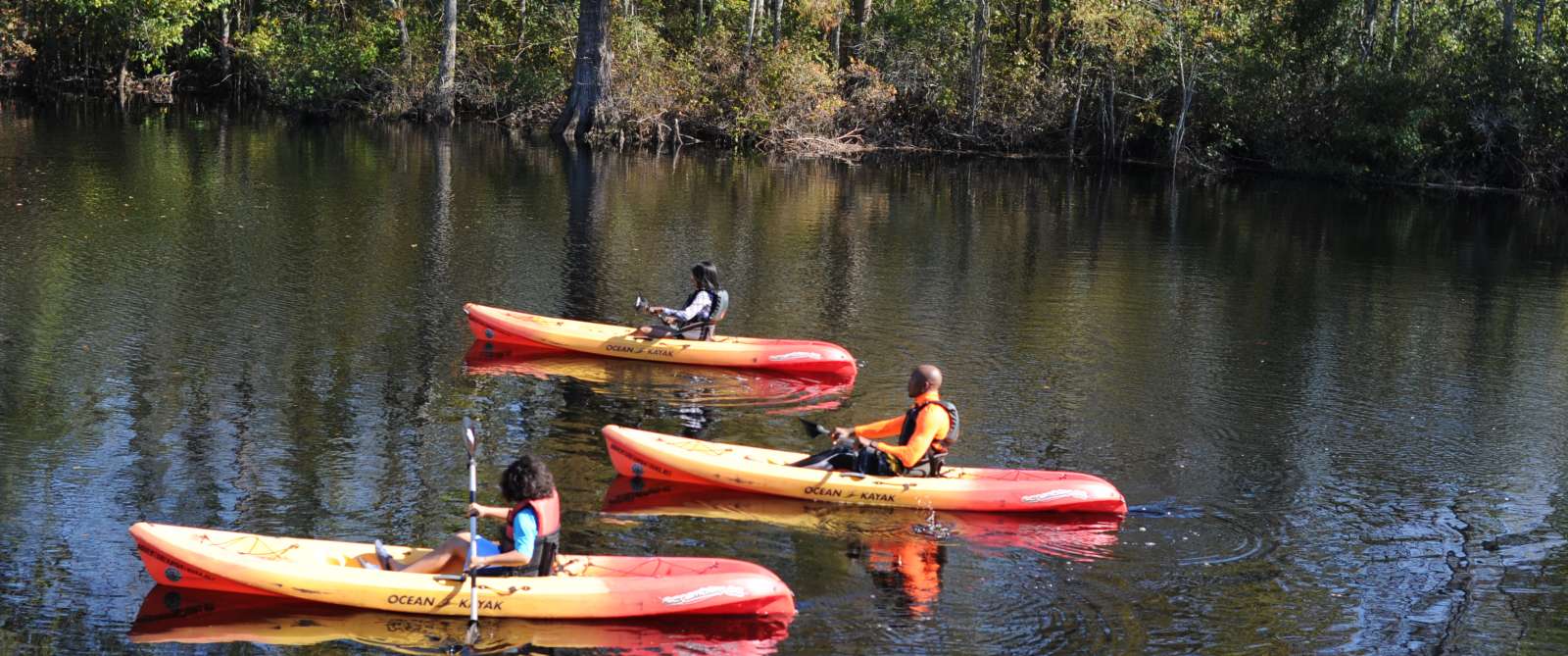Paddling Safety Tips
There are basic safety rules that all paddlers should follow. Always use common sense and follow safety rules at all times.
Do Your Homework
Seek qualified instruction to learn proper paddling techniques, water safety, and basic first aid before setting out.
Be Weather Wise
Be aware of weather conditions and water temperatures. Prepare for changes in weather.
Avoid Overload
Never exceed the weight capacity of your kayak, canoe, or paddleboard. Always check your equipment for wear and tear before you paddle.
Dress for Success
A life vest is often overlooked by experienced swimmers. Virginia law requires one USCG-approved wearable PFD for each person on board. When paddling in rivers, always wear a helmet.
Don't Be a Stranger
When paddling in a new area, be aware of local currents, shoreline conditions, and weather patterns. Plan an "escape" route - an alternative place to get off the water - should environmental conditions dictate it.
Don't Go It Alone
Tell someone your paddle plan, which includes where you are going, what you will be doing, how long you expect to be on, and how many people are in your party. Then stick to your plan.
Avoid Horse Play
Kayaks, canoes, and paddleboards are lightweight and small. Once positioned, avoid unnecessary movement. Board in shallow water, then paddle out. Do not stand in your kayak or canoe until you return to shallow waters and are ready to depart.
Be Prepared
Bring appropriate safety, rescue, and navigational aids, and more-than-adequate food, water, and extra protective clothing. Program the closest Emergency U.S. Coast Guard search and rescue number into your cell phone: (757) 638-6641.
Avoid Drugs and Alcohol
Never mix paddling with alcohol or drugs.
Be Visible
Wear bright colors so others can see you between waves or in the fog. Carry a bright light, flares, and whistle to signal your position.
Be Aware
Conflicts may arise between various boating groups due to craft size, education, and training of the operators, maneuverability, geographic constraints, and the number of recreational users on the waterway. Knowing the "Rules of the Road" and "Best Practices for Paddlers and Paddlesport Programs" recommended by the American Canoe Association (ACA) can ensure that your time on the water is safe and enjoyable.
Be sure to visit ACA's website for additional videos, brochures, and statistics.






